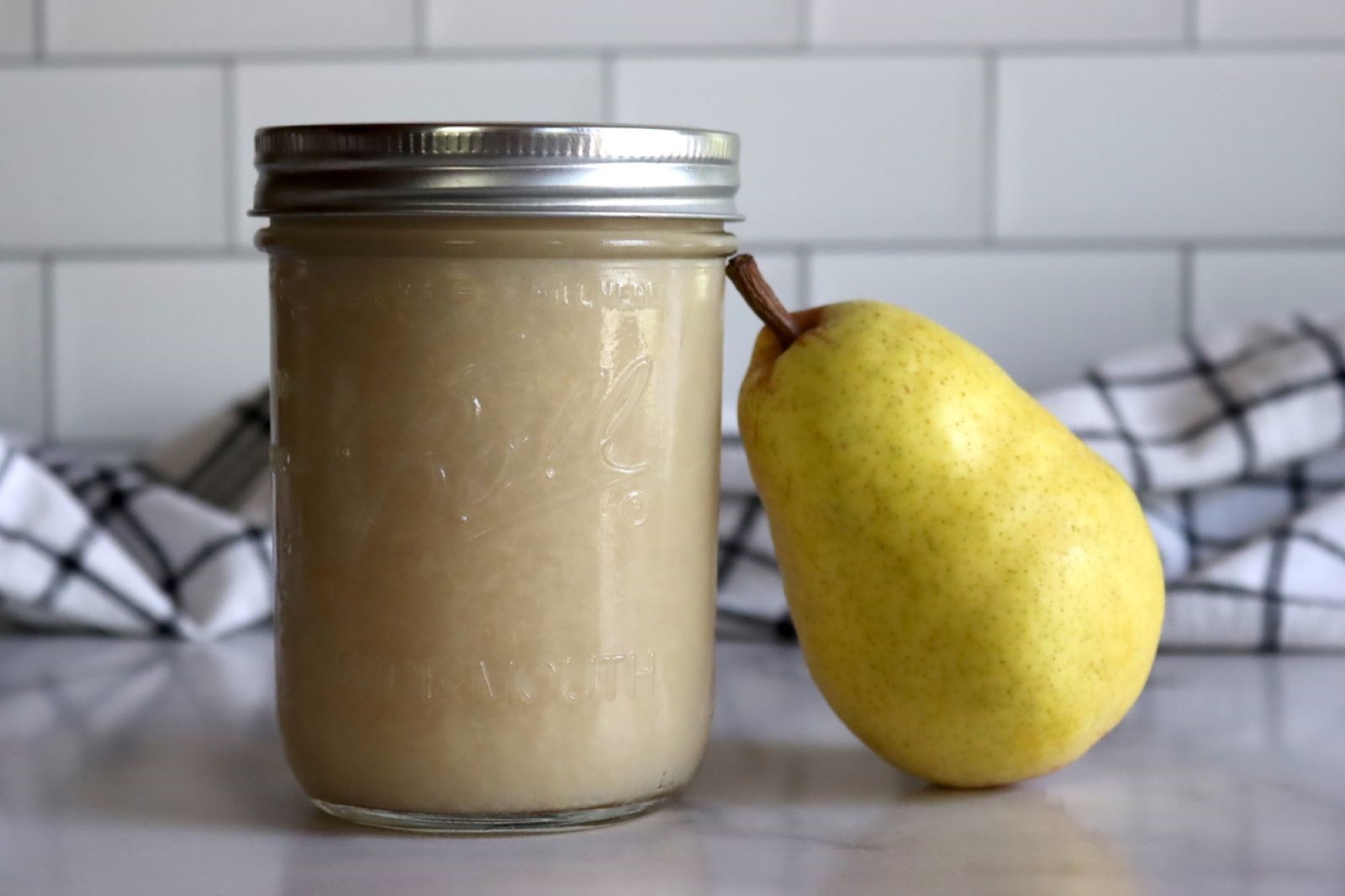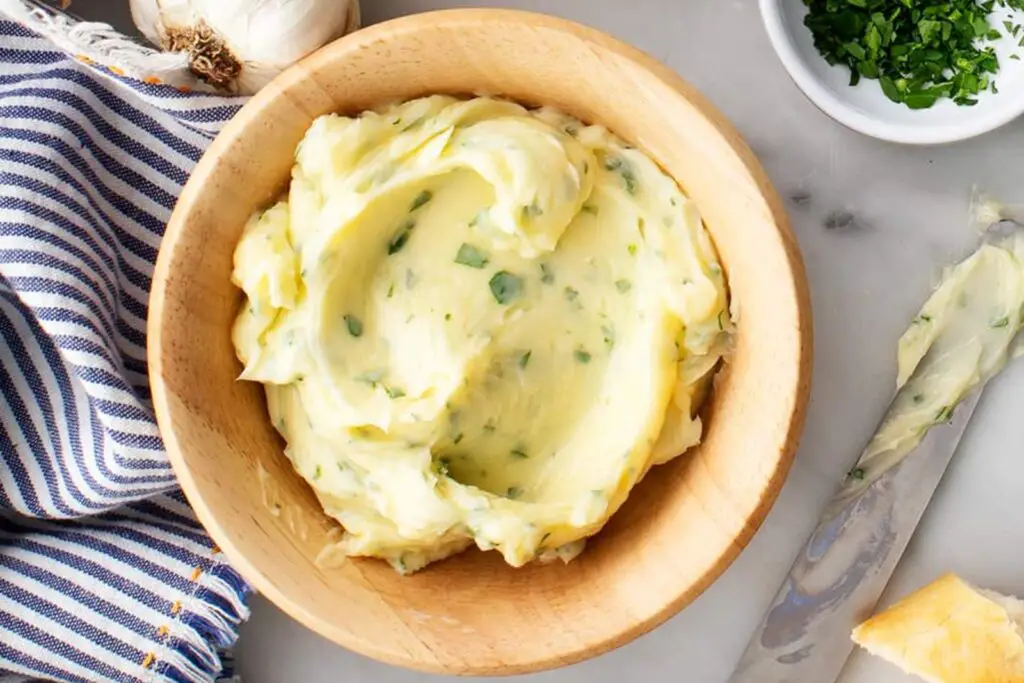
Pear sauce, a delightful and versatile fruit puree, offers a delicious way to savor the natural sweetness and delicate flavor of ripe pears. Whether enjoyed on its own as a comforting snack or used as a delectable topping for pancakes, waffles, or desserts, pear sauce adds a delightful touch to a wide range of dishes. If you have a surplus of ripe pears or want to preserve the season’s harvest, freezing pear sauce is an excellent option to ensure its availability throughout the year. By freezing pear sauce, you can lock in its fresh taste and essential nutrients, creating a convenient and wholesome addition to your culinary repertoire. In this guide, we will explore the simple steps for freezing pear sauce, including suitable storage methods and tips for preserving its vibrant flavor and smooth texture when thawed. Join us on this journey to freezing pear sauce, where we uncover the secrets to preserving the essence of fresh pears and enriching your culinary creations with this delightful fruit puree.
Here are the simple steps to freeze pear sauce:
Step 1: Prepare Ripe and Fresh Pears
The first step in freezing pear sauce is to start with ripe and fresh pears. Selecting the right pears is crucial to ensure the sauce has the best possible flavor and texture once it’s frozen and thawed. Here’s why each aspect of this step is important:
- Ripe but not overly soft: Choosing pears that are ripe but still firm is essential. Overly soft pears might be too mushy and lack the desired texture for the sauce. On the other hand, unripe pears can be too hard and won’t have developed their full flavor. Ripe pears strike the perfect balance of sweetness and firmness.
- Vibrant color: A vibrant color indicates that the pears are at their peak ripeness. Pears with a rich, vibrant hue are likely to have a better taste and more nutrients than those that are dull or have brown spots.
- Sweet aroma: A sweet and fragrant aroma is a reliable indicator of the pear’s ripeness and flavor. If the pears emit a pleasant scent, it indicates that they have developed natural sugars, contributing to a sweeter and tastier sauce.
- Washing the pears: Thoroughly washing the pears is essential to remove any dirt, residues, or pesticides that may be present on the skin. Even if you plan to peel the pears before making the sauce, washing ensures that no external contaminants affect the quality of the final product.
By paying attention to these aspects and carefully selecting ripe and fresh pears, you set the foundation for a flavorful and enjoyable pear sauce. Once you have the right pears, you can move on to the subsequent steps to create the sauce and prepare it for freezing, preserving its delicious taste for future use.
Step 2: Peel and Core the Pears
We prepare the pears for cooking and blending into pear sauce by removing the skin and cores. Here’s why each part of this process is important:
- Peel the skin off the pears: The skin of the pear is often tough and can affect the texture of the sauce if left on. Peeling the pears ensures a smooth and velvety consistency in the final sauce. You can use a vegetable peeler or a paring knife to remove the skin. Take care to peel away just the outer layer, leaving behind the tender flesh.
- Cut the pears in half: Cutting the pears in half makes it easier to access and remove the core, as well as speeds up the cooking process. The core of the pear contains the seeds and is typically harder and less flavorful than the flesh. Cutting the pears in half exposes the core for easy removal.
- Remove the cores: The core of the pear is not desirable in the sauce, as it can be gritty and affect the smoothness of the final product. Using a spoon or a melon baller, gently scoop out the cores from each pear half. Make sure to remove all the seeds and any tough fibrous parts, leaving only the tender and juicy flesh.
- Discard the peels and cores: The peels and cores are parts of the pear that we won’t use in the sauce. They can be discarded as compost or added to the kitchen waste for disposal.
- Retain the flesh for making the pear sauce: After peeling and coring the pears, you are left with the most desirable part – the pear flesh. This is what you’ll use to create the pear sauce. The flesh contains the delicious sweetness and flavors that we want to preserve and freeze for later use.
By peeling and coring the pears, we ensure that only the best parts of the fruit are used to make the sauce. Removing the peels and cores results in a smoother, more refined texture, and allows the full sweetness and aroma of the pears to shine through in the final frozen pear sauce.
Step 3: Cook the Pears
We cook the peeled and cored pear pieces to soften them and prepare them for blending into a smooth sauce. Here’s why this process is important:
- Softening the pears: Cooking the pears is essential to soften their texture. Raw pears are firm and have a crunchy bite, which is not suitable for making a smooth sauce. By cooking them, the pears become tender and easily mashable, allowing us to blend them into a silky and creamy consistency.
- Enhancing the flavor: Cooking the pears brings out their natural sweetness and intensifies their flavor. The gentle heat breaks down the fruit’s cellular structure, releasing sugars and aromatic compounds, resulting in a more flavorful pear sauce.
- Preventing sticking: Adding a splash of water to the saucepan helps prevent the pear pieces from sticking to the bottom and burning during cooking. It also creates a bit of steam, aiding in the softening process without overly browning the pears.
- Adding spices: The option to add a pinch of cinnamon or nutmeg provides a delightful twist to the pear sauce. These warm spices complement the natural sweetness of the pears and add a subtle depth of flavor. The choice of spices depends on personal preference and the intended use of the sauce.
- Monitoring the cooking process: It’s crucial to cook the pears over medium heat to avoid overcooking or scorching them. Overcooking could lead to a loss of flavor and nutrients, and burnt pears can impart a bitter taste to the sauce.
By cooking the pears, we transform them into a soft and flavorful base for the pear sauce. The cooking process is simple and ensures that the sauce will have a delightful taste and a smooth texture, making it a versatile and delectable condiment to enjoy in various dishes. Adding spices enhances the flavor profile, allowing you to customize the sauce to suit your taste preferences and culinary creations.
Step 4: Blend the Pear Mixture
We take the cooked pears and transform them into a smooth and luscious sauce using a blender or an immersion blender. Here’s why this process is important:
- Creating a uniform texture: Blending the cooked pears ensures that all the fruit is evenly combined, resulting in a consistent texture throughout the sauce. This is especially important if you desire a smooth and creamy pear sauce.
- Breaking down any remaining lumps: Even though the pears are cooked to be soft and mashable, there might still be small lumps or fibers present. Blending the mixture helps to break down these remaining lumps, resulting in a smoother sauce.
- Customizing the consistency: By blending the pear mixture, you have control over the final texture of the sauce. Some people prefer a chunky sauce with visible fruit pieces, while others enjoy a velvety smooth sauce. You can blend the pears to your preferred consistency, ensuring the sauce matches your taste preferences.
- Enhancing the appearance: A blended pear sauce looks more appealing and presentable, especially if you plan to use it as a topping or garnish for various dishes. The smooth texture gives it a refined and elegant appearance.
- Facilitating freezing and thawing: A blended pear sauce freezes and thaws more uniformly compared to a chunky sauce. The even consistency ensures that the sauce retains its flavor and texture throughout the freezing and thawing process.
- Homogenizing flavors: Blending helps to evenly distribute any added spices or flavorings, resulting in a sauce with a balanced taste.
Whether you choose to use a traditional blender or an immersion blender, the blending process is a crucial step in creating a delicious and visually appealing pear sauce. The outcome is a smooth, flavorful sauce that can be used in a variety of dishes, adding a touch of sweetness and sophistication to your culinary creations.
Step 5: Cool the Pear Sauce
Allow the cooked and blended pear sauce to cool down completely before proceeding with the freezing process. Here’s why this step is important:
- Safe handling: Allowing the pear sauce to cool completely ensures safe handling during the freezing process. If the sauce is too hot when placed in airtight containers, it can create condensation inside the containers, leading to the formation of ice crystals and compromising the texture of the sauce.
- Preventing bacterial growth: Rapidly cooling the pear sauce helps minimize the time it spends in the temperature range where harmful bacteria can thrive. Cooling the sauce quickly reduces the risk of bacterial growth and foodborne illnesses.
- Avoiding freezer damage: Placing hot or warm food directly in the freezer can cause the surrounding temperature to rise temporarily. This can affect the freezing process of other items in the freezer and may even lead to thawing and refreezing, negatively impacting the quality of both the pear sauce and other frozen foods.
- Speeding up the cooling process: Transferring the sauce to a shallow container or a wide-mouthed bowl increases its surface area, allowing heat to dissipate more rapidly. This speeds up the cooling process and helps you get the sauce to a safe temperature for freezing in a shorter amount of time.
- Consistency of the sauce: Cooling the pear sauce completely before freezing ensures that it maintains its smooth texture and flavors during the freezing and thawing process. If the sauce cools too slowly or unevenly, it may develop an inconsistent texture when frozen.
- Preventing condensation: Placing hot sauce directly in airtight containers can trap steam and moisture inside, leading to the formation of ice crystals during freezing. Cooling the sauce beforehand reduces the risk of condensation and helps maintain the sauce’s quality.
By allowing the pear sauce to cool completely before freezing, you ensure that it is safe to handle, retains its smooth texture, and freezes more effectively. The cooled pear sauce will be ready to be portioned, sealed in airtight containers, and placed in the freezer to preserve its delectable flavor for future use.
Step 6: Portion the Sauce for Freezing
Divide the blended pear sauce into smaller portions before freezing. This process is essential for practicality and convenience when using the sauce later. Here’s why this step is important:
- Controlled portions: By dividing the pear sauce into smaller portions, you can freeze only the amount you need for each use. This helps minimize waste, as you won’t have to thaw the entire batch when you only require a portion of the sauce.
- Easy defrosting: Smaller portions of pear sauce thaw more quickly and evenly than a large container of frozen sauce. This means you can enjoy the sauce at a moment’s notice without waiting for the whole batch to thaw.
- Versatility in servings: Portioning the sauce allows you to use it in different ways, depending on the recipe or dish you’re preparing. Whether you need just a small amount for a garnish or a larger quantity for a dessert, having individual portions readily available makes cooking and meal preparation more efficient.
- Reducing contamination risk: Each time you thaw and refreeze a large container of pear sauce, you increase the risk of bacterial growth or contamination. Portioning minimizes the need for repeated thawing and refreezing, maintaining the sauce’s quality and safety.
- Better organization: Labeled and individually portioned containers are easier to store and organize in the freezer. You can stack them neatly, saving space and preventing any accidental spills or leaks.
- Extended shelf life: Portioning the sauce allows you to use it gradually over time, which can be especially beneficial if you have a surplus of pears or wish to enjoy the sauce throughout the year. Properly portioned and sealed containers can maintain the quality of the pear sauce for an extended period in the freezer.
By dividing the pear sauce into smaller portions, you ensure that the freezing and defrosting processes are more efficient and that the sauce remains fresh and easy to use whenever you need it. This simple step adds convenience and flexibility to your culinary endeavors, making it easier to incorporate the delightful flavors of pear sauce into a wide range of recipes and meals.
Step 7: Store in Airtight Containers
Transfer the portioned pear sauce into airtight containers before freezing. Proper storage is crucial to maintain the quality, flavor, and texture of the sauce during freezing. Here’s why this process is important:
- Preventing freezer burn: Freezer burn occurs when air comes into contact with the surface of frozen food, causing it to dry out and develop off-flavors. By using airtight containers, we create a protective barrier that prevents air from reaching the pear sauce, reducing the risk of freezer burn.
- Preserving freshness: Airtight containers lock in the natural flavors and aromas of the pear sauce. This helps preserve the sauce’s delightful taste and ensures it retains its original characteristics when thawed and used in recipes.
- Avoiding odors and cross-contamination: Airtight containers prevent the pear sauce from absorbing any odors or flavors from other foods stored in the freezer. This avoids the risk of cross-contamination, ensuring the sauce maintains its unique pear flavor.
- Minimizing crystallization: When liquids freeze, they can form ice crystals that can affect the texture of the sauce. Airtight containers help reduce the formation of large ice crystals, keeping the sauce smoother and more enjoyable when thawed.
- Allowing for expansion: Leaving some space at the top of the containers accounts for the expansion that occurs during freezing. As liquids freeze, they expand, and without enough room in the container, the pressure could cause the lid to pop off or the container to crack.
- Easy stacking and organization: Airtight containers are designed for easy stacking and organization in the freezer. They take up less space and allow you to efficiently use the available freezer space.
- Maintaining food safety: Airtight containers create a more hygienic storage environment, minimizing the risk of bacteria or contaminants reaching the sauce.
By storing the pear sauce in airtight containers, you ensure that it remains in top-quality condition throughout its time in the freezer. The sauce will be ready to use whenever you need it, providing a delicious and convenient addition to your culinary creations.
Step 8: Label and Date the Containers
Label each airtight container of pear sauce with important information to ensure easy identification and proper usage. Here’s why this process is important:
- Avoiding confusion: Labeling the containers with the contents (pear sauce) prevents any mix-ups with other items in the freezer. It ensures that you can quickly identify the sauce without having to open each container to check its contents.
- Tracking freshness: By adding the date of freezing to the label, you can keep track of how long the pear sauce has been stored in the freezer. This is crucial for ensuring the sauce is used within its optimal freshness period.
- Rotating stock: If you make multiple batches of pear sauce or store different items in the freezer, labeling and dating the containers will help you identify which batch or sauce needs to be used first. This encourages a “first in, first out” approach to prevent any sauce from sitting in the freezer for too long.
- Ensuring quality: Pear sauce can typically be stored in the freezer for up to six months. After this period, the quality may begin to decline, affecting taste and texture. The date on the label allows you to consume the sauce within the recommended timeframe for the best experience.
- Reducing food waste: By knowing the date of freezing, you can make informed decisions about when to use the pear sauce to avoid unnecessary waste. Properly labeled containers help you plan meals and recipes effectively.
- Food safety: Having clear labels with dates ensures you can easily check the storage time of the pear sauce. Consuming frozen foods beyond their recommended storage period can potentially compromise food safety.
- Convenient retrieval: When you have multiple containers of pear sauce in the freezer, clear labels allow you to retrieve the specific batch you need quickly, saving time and effort.
By taking the time to label and date the containers, you create an organized and efficient system for managing your frozen pear sauce. This practice ensures that you use the sauce before its quality starts to decline and helps you make the most of this delicious condiment throughout its recommended storage period.
Step 9: Freeze the Pear Sauce
Place the labeled and sealed containers of pear sauce into the freezer to begin the freezing process. Proper freezing is crucial for maintaining the sauce’s quality and preserving its flavor and texture. Here’s why this step is important:
- Even freezing: Placing the sealed containers on a flat surface ensures that the pear sauce freezes evenly. This is important for maintaining a consistent texture and preventing any portions of the sauce from thawing and refreezing, which can affect its quality.
- Colder temperature at the back of the freezer: The back of the freezer tends to be colder and more insulated than the front, where the door is frequently opened and closed. Storing the containers in the back ensures a more stable and consistent freezing temperature, reducing the risk of temperature fluctuations that could compromise the sauce.
- Minimizing freezer door openings: Placing the containers at the back of the freezer reduces the need to access that area frequently, limiting the number of times the freezer door is opened. Frequent openings can cause temperature fluctuations and affect the freezing process.
- Maintaining food safety: A consistent freezing temperature helps preserve the quality and safety of the pear sauce. When food freezes quickly and evenly, it prevents the growth of harmful microorganisms and ensures the sauce remains safe to eat.
- Preventing spillage: Placing the containers on a flat surface reduces the risk of accidental spillage or leakage, which can be inconvenient and messy.
- Maximizing freezer space: Storing the containers in an organized manner, especially at the back of the freezer, allows you to use the available space efficiently and optimize storage capacity.
By freezing the pear sauce properly, you ensure that it retains its delectable flavor and smooth texture for future use. The consistent and even freezing process preserves the sauce’s quality, making it a delightful addition to your meals and recipes even when pears are not in season. Remember to adhere to recommended storage times to enjoy the best-tasting pear sauce throughout its shelf life in the freezer.
How long pear sauce can last in the freezer?
Pear sauce can last in the freezer for up to 6 months when stored in airtight containers at a consistent temperature of 0°F (-18°C) or below. Beyond this period, the sauce may begin to lose its quality and flavor. Properly labeled and dated containers help track the storage time and ensure the sauce is used within its optimal freshness period.
Other related questions
How do you defrost pear sauce?
To defrost pear sauce, transfer the sealed container from the freezer to the refrigerator and let it thaw slowly overnight. Alternatively, place the container in a bowl of cold water, changing the water every 30 minutes until the sauce is fully thawed. Avoid using heat or microwaving to defrost, as it may negatively affect the sauce’s texture and flavor.
Can you refreeze pear sauce?
Refreezing pear sauce is generally not recommended, as it can affect the quality and safety of the sauce. Once the sauce is thawed, harmful bacteria may have multiplied, and refreezing can lead to further degradation in flavor and texture. It is best to portion the sauce before freezing to avoid the need for refreezing and to ensure it is used efficiently.
How do I know if the pear sauce has gone bad after being frozen?
To determine if frozen pear sauce has gone bad, use your senses to assess its quality. Look for signs of freezer burn, such as ice crystals or changes in color and texture. A sour or off odor and an unusual taste are indications of spoilage. If any of these signs are present, it’s best to discard the sauce to avoid the risk of foodborne illness.
Can I freeze pear sauce with added spices or sweeteners?
Yes, you can freeze pear sauce with added spices or sweeteners. Before freezing, ensure that the sauce is cooled to room temperature to prevent condensation. Store the pear sauce in airtight containers or freezer bags to maintain its flavor and quality during freezing. Upon thawing, the spices and sweeteners in the sauce should remain intact, preserving its taste and enhancing its versatility for various culinary uses.
Can I freeze pear sauce made from different pear varieties?
Yes, you can freeze pear sauce made from different pear varieties. Whether it’s made from Bartlett, Anjou, Bosc, or other pear types, the freezing process remains the same. Ensure the pear sauce is properly cooled and stored in airtight containers or freezer bags to maintain its distinct flavors and textures. Thawed pear sauce from different varieties can still be used in cooking, baking, or as a delicious topping for various dishes.
Can frozen pear sauce be used as a topping for desserts and yogurt?
Yes, frozen pear sauce can be used as a delightful topping for desserts and yogurt. Thaw the frozen pear sauce in the refrigerator until it reaches the desired consistency, then drizzle it over ice cream, cakes, pancakes, or mix it into yogurt for added flavor. Its natural sweetness and fruity taste make it a versatile and delicious addition to various culinary creations.








